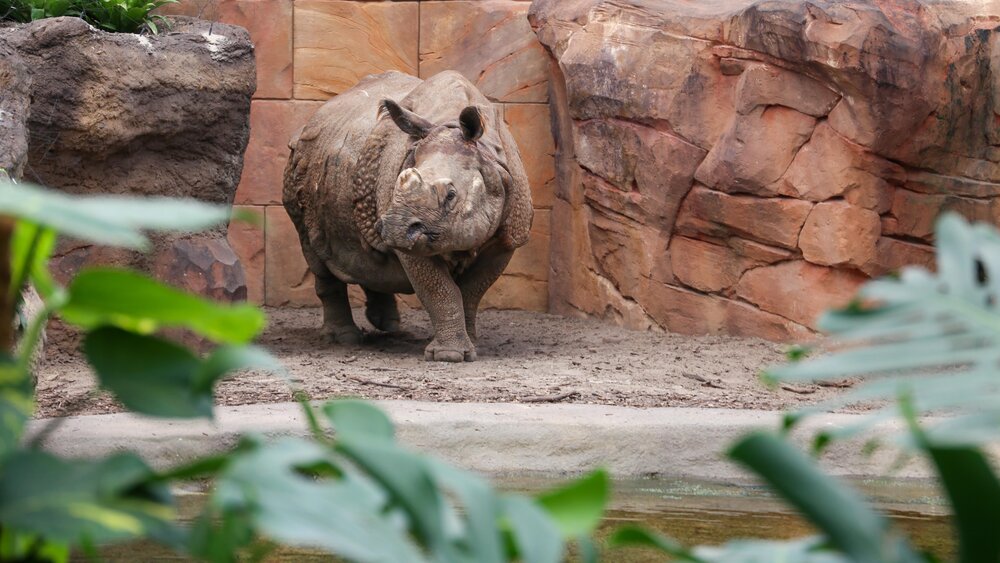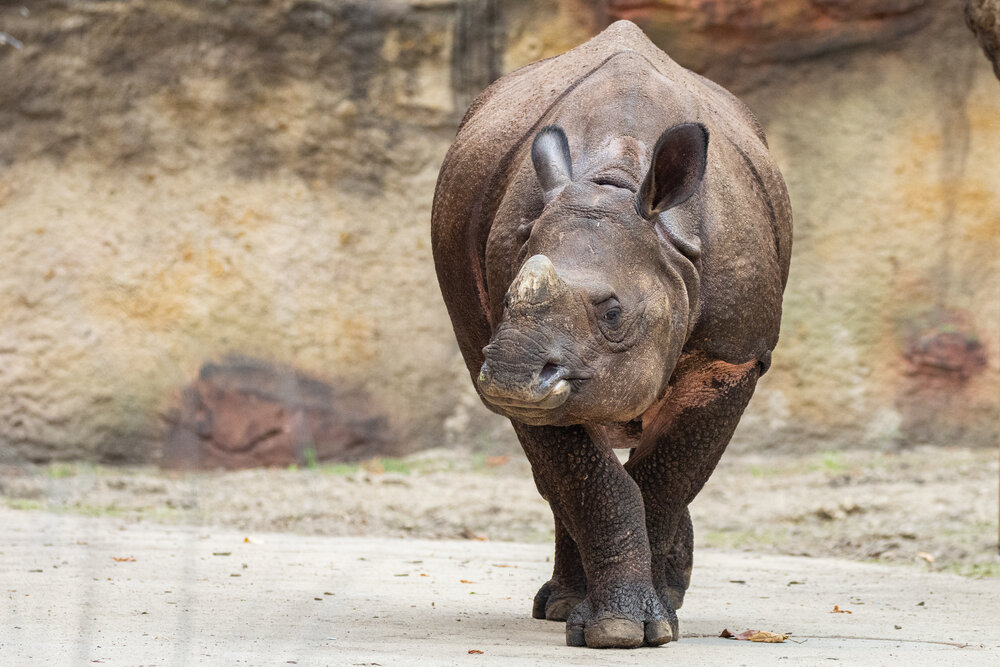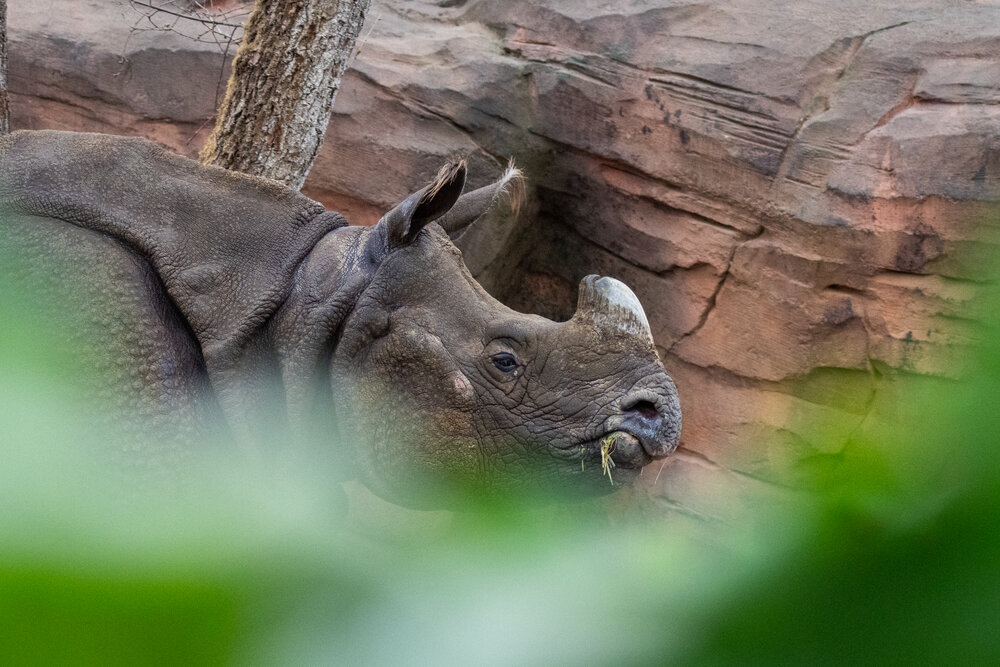
Greater one-horned Rhinoceros
Zoo and Tierpark Berlin are supporting efforts to protect Greater one-horned Rhinoceros in Assam.
Project facts
- Project partner
Aaranyak
- Species
Greater one-horned Rhinoceros (Rhinoceros unicornis)
- IUCN threatened status
Vulnerable (VU)
- Project location
Assam, India
- Greatest threat
Poaching
- Approach
Protecting natural habitat and supporting the work of local initiatives
Threat Categories of IUCN


Greater one-horned rhinos in Berlin
The Greater one-horned rhinoceros has long been closely associated with Zoo and Tierpark Berlin. The animals first came to Zoo Berlin back in 1958, and they lived at Tierpark Berlin from 1966 to 2019. Despite weighing as much as two tonnes, these hefty ungulates are excellent swimmers. With the opening of its impressive Rhino Pagoda, Zoo Berlin became the first place in the world where zoo visitors can admire these rhinoceroses underwater.
Unwitting gardeners
Rhinoceroses are herbivores. Each day, one rhino eats around 150 kg of grasses, twigs, branches and aquatic plants. But their diet also includes fruits, the seeds of which rhinos spread over great distances in their dung – which is also an ideal fertiliser for the plants’ growth. Rhinoceroses therefore unwittingly act as gardeners, contributing to the propagation of their habitat’s vegetation. Juicy elephant grass is one of the favourite foods of Indian rhinos. It grows on river banks, where the animals can often be found happily grazing, up to their tummies in the water.
On the verge of extinction
In the wild, Greater one-horned rhinoceroses are found exclusively in India and Nepal. They continue to suffer from the loss of suitable habitat as well as the ongoing threat of poaching. The encroachment of agricultural spaces and human settlements meant that the population of these gentle giants had already fallen to just 200 by the beginning of the 19th century. Numbers have recovered somewhat in recent years thanks to nationally implemented measures like the establishment of protected areas.
Coordinated protection efforts
However, Zoo and Tierpark Berlin are also supporting the conservation of the Greater one-horned rhino in the wild. The state of Assam in northeastern India is home to around 70 percent of the world’s Greater one-horned rhino population. Berlin’s zoos are working with the local project partner Aaranyak to promote research on Greater one-horned rhinoceroses in Manas National Park and Pobitora Wildlife Sanctuary.
Research for species protection
Collecting scientific data on the Greater one-horned rhinoceros population is important for the development of further protective measures. By recording the rhinos’ biological characteristics, scientists can understand more about how the animals live. A database on the rhinos living in Aaranyak’s research areas is being continually expanded with new findings. The results of the study will enable experts to derive effective conservation action for this rhino population and others.
Photos on site: © Aranyak




